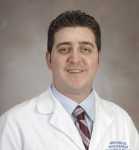Author Interviews, Brigham & Women's - Harvard, Critical Care - Intensive Care - ICUs, End of Life Care, JAMA / 21.03.2019
Serious Illness Conversation Guide Can Help Clinicians Communicate with Critically Ill Patients
MedicalResearch.com Interview with:
Joanna Paladino, MD
Director of Implementation, Serious Illness Care Program | Ariadne Labs
Brigham and Women's Hospital | Harvard T.H. Chan School of Public Health
Palliative Care | Dana-Farber Cancer Institute
Instructor | Harvard Medical School and
Dr. Rachelle Bernacki MD MS
Director of Quality Initiatives
Psychosocial Oncology and Palliative Care
Senior Physician, Assistant Professor of Medicine
Harvard Medical School
Dr. Paladino's responses:
MedicalResearch.com: What is the background for this study? What are the main findings?
Dr. Paladino: People living with serious illness face many difficult decisions over the course of their medical care. These decisions, and the care patients receive, should be guided by what matters most to patients, including their personal values, priorities, and wishes. These conversations don’t often happen in clinical practice or do so very late in the course of illness, leaving patients exposed to getting care they don’t want.
Doctors and nurses want to have these important discussions, but there are real challenges, including insufficient training and uncertainties about when and how to start the conversation. We designed an intervention with clinical tools, clinician training, and systems-changes to address these challenges. When tested in a randomized clinical trial in oncology, we found that the intervention led to more, earlier, and better conversations between oncology clinicians and their patients with life-limiting cancer. These findings demonstrate that it is possible to ensure reliable, timely, and patient-centered serious illness conversations in an outpatient oncology practice.
(more…)





























